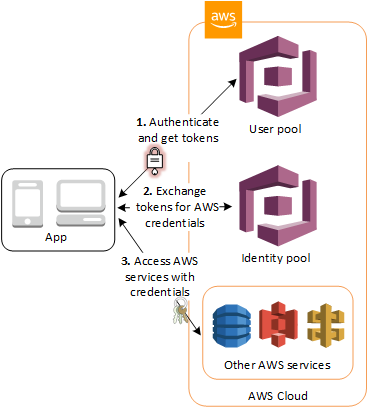Focus on Blazor | Channel 9
Blazor WebAssembly Preview - Full-Stack C# Development for Web Applications @InfoQ
"Microsoft has released the 3.2.0 Preview 1 of Blazor WebAssembly, which adds support for a SignalR client, simplified startup and improved download size.
Blazor is a framework for building web applications using C#, HTML and CSS. The C# code is used for both client and server functionality meaning that duplicated business logic is no longer an issue. The C# code is compiling to run on WebAssembly."
Thursday, February 13, 2020
AWS Cognito User Pools vs Identity Pools
Understanding AWS Cognito User and Identity Pools for Serverless Apps - The New Stack
An Identity Provider is a service that manages authentication, providing a user login and the ability to verify a user’s identity. AWS Cognito has its own Identity Provider (using User Pools, which are explained below), but it can also integrate with well-established third-party Identity Providers like Facebook and Google. Additionally, Cognito can integrate with any Identity Provider that implements the SAML or OAuth2 protocols. The process of integrating with a third-party for authentication is called Federation.
User Pools and Identity Pools (also called Federated Identities).

An Identity Provider is a service that manages authentication, providing a user login and the ability to verify a user’s identity. AWS Cognito has its own Identity Provider (using User Pools, which are explained below), but it can also integrate with well-established third-party Identity Providers like Facebook and Google. Additionally, Cognito can integrate with any Identity Provider that implements the SAML or OAuth2 protocols. The process of integrating with a third-party for authentication is called Federation.
User Pools and Identity Pools (also called Federated Identities).
User Pools provide a user directory for your application, including all the bells and whistles that come with user management, like sign-up, sign-in, group management, etc. User Pools also provide your app with information like the user’s ID and group membership, so that your code can handle authorization.
Identity Pools, in contrast, are used to assign IAM roles to users who authenticate through a separate Identity Provider. Because these users are assigned an IAM role, they each have their own set of IAM permissions, allowing them to access AWS resources directly.
Identity Pools, in contrast, are used to assign IAM roles to users who authenticate through a separate Identity Provider. Because these users are assigned an IAM role, they each have their own set of IAM permissions, allowing them to access AWS resources directly.

Subscribe to:
Comments (Atom)

